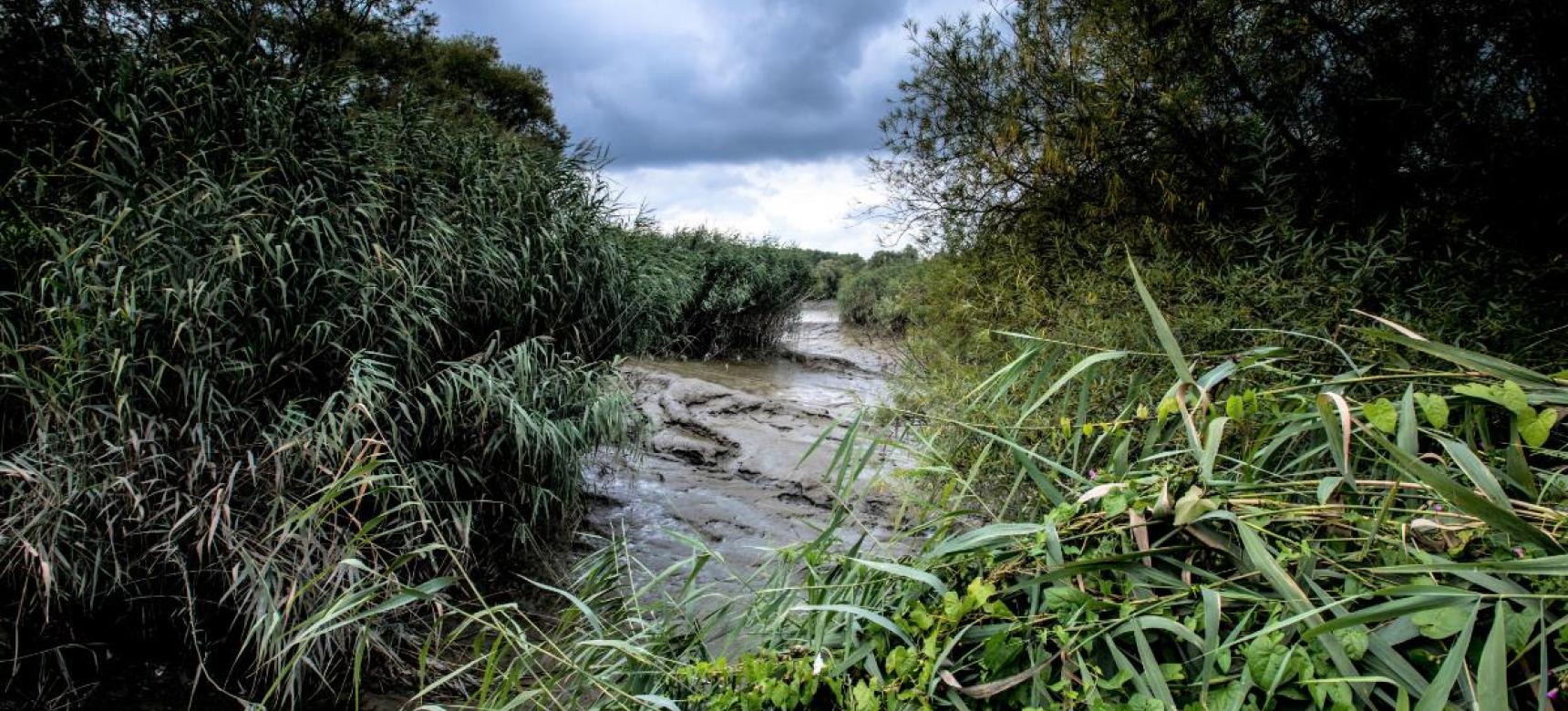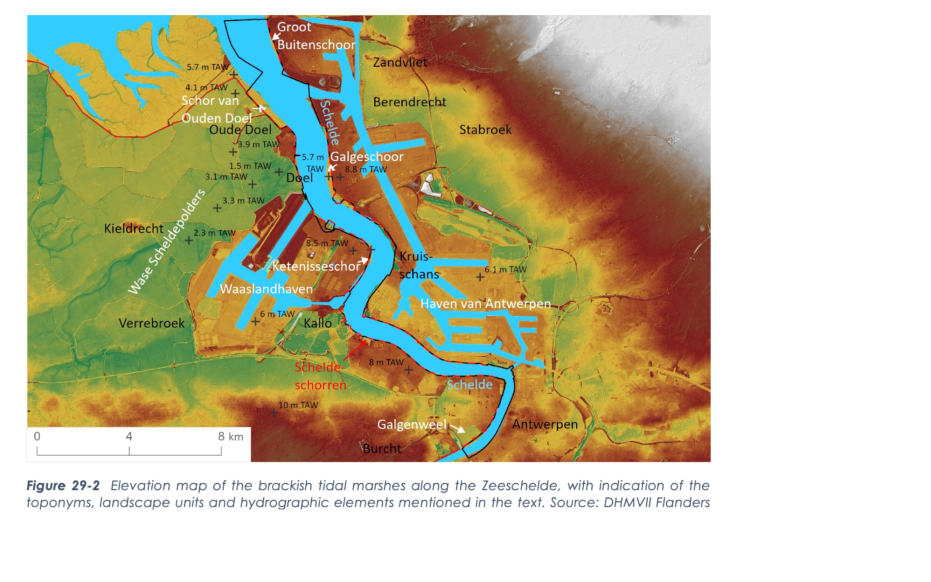Origin of the landscape
During part of the Pleistocene there was no Scheldt in this area, drainage was via the Flemish Valley. At the end of the last ice age, this valley was dammed up by the Maldegem-Stekene sand ridge and the Scheldt took its present course. So it is only since the beginning of the late glacial that the Scheldt passes Antwerp. A very last cold phase caused a barren landscape and formation of cover sand ridges. From the Early Holocene, forests developed again. These held precipitation better and prevented erosion, therefore the Scheldt turns into a small stream within a swampy forest. About 6,500 years ago, the tide reached the region for the first time since the last ice age. During this phase, peat development was interrupted by mudflats and salt marshes. About 500 years later, the tidal action disappeared again and the formation of the peat bog that had already covered the entire valley by 5,000 years ago resumed.

